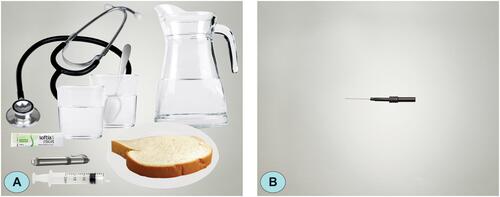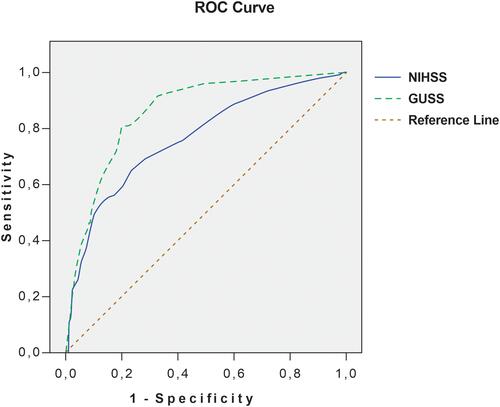Figures & data
Figure 1 Materials for GUSS and NIHSS. (A) Materials required for GUSS include 2 cups, a teaspoon, a bottle of drinking water, a stethoscope, a syringe, a penlight, food thickener and a piece of bread. (B) The tool needed to evaluate NIHSS only a sharp needle.
Abbreviations: GUSS, Gugging Swallowing Screen; NIHSS, National Institutes of Health Stroke Scale.

Table 1 Characteristics of Patients
Figure 2 ROC curves for SAP prediction by NIHSS and GUSS.
Abbreviations: ROC, receiver operating characteristics; SAP, stroke-associated pneumonia; NIHSS, National Institutes of Health Stroke Scale; GUSS, Gugging Swallowing Screen.

Table 2 Prediction for the Risk of SAP by Univariate Logistic Regression Analysis
Table 3 Average Time to Evaluate NIHSS and GUSS for Each Patient
